Atlantic Time Zone
| Atlantic Time Zone | |
|---|---|
|
| |
| UTC offset | |
| AST | UTC−4:00 |
| ADT | UTC−3:00 |
| Observance of DST | |
| DST is observed in certain regions of this time zone between the 2nd Sunday in March and the 1st Sunday in November. | |
| DST ended | 1 Nov 2015 |
| DST begins | 13 Mar 2016 |
The Atlantic Time Zone is a geographical region that keeps standard time—called Atlantic Standard Time (AST)—by subtracting four hours from Coordinated Universal Time (UTC), resulting in UTC-4; during part of the year some parts of it observe daylight saving time by instead subtracting only three hours (UTC-3). The clock time in this zone is based on the mean solar time of the 60th meridian west of the Greenwich Observatory.
In Canada, the provinces of New Brunswick[1] and Nova Scotia[2] reckon time specifically as an offset of 4 hours from Greenwich Mean time (GMT-4). Prince Edward Island and small portions of Quebec (eastern Côte-Nord and the Magdalen Islands) are also part of the Atlantic Standard Time Zone. Officially, the entirety of Newfoundland and Labrador observes Newfoundland Standard Time,[3] but in practice most of Labrador uses the Atlantic Standard Time Zone.
No portion of the continental United States is located in the Atlantic Time Zone; however the territories of Puerto Rico and the U.S. Virgin Islands do fall under Atlantic Standard Time.
Those portions of the Atlantic Time Zone that participate in daylight saving time do so as Atlantic Daylight Time (ADT), which has one hour added to make it only three hours behind GMT (UTC-3).
Areas covered
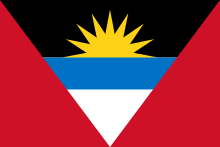 Antigua and Barbuda (No DST)
Antigua and Barbuda (No DST)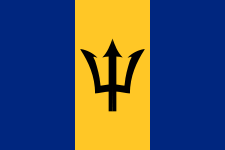 Barbados (No DST)
Barbados (No DST) Canada, in the following areas:
Canada, in the following areas:
- Nova Scotia
- New Brunswick
- Prince Edward Island
- Most of Labrador
- Magdalen Islands, Quebec
- Côte-Nord (east of the 63rd meridian), Quebec
 Dominica (No DST)
Dominica (No DST) Dominican Republic (No DST)
Dominican Republic (No DST) France, in the following areas:
France, in the following areas:
- Guadeloupe (No DST)
- Martinique (No DST)
- Saint-Barthélemy (No DST)
- Saint-Martin (No DST)
 Greenland, in the following area:
Greenland, in the following area:
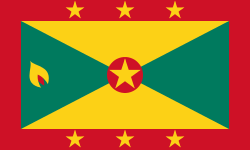 Grenada (No DST)
Grenada (No DST) Netherlands, in the following areas:
Netherlands, in the following areas:
 Aruba (No DST)
Aruba (No DST) Bonaire (No DST)
Bonaire (No DST)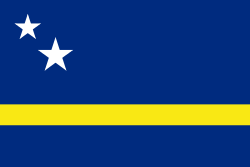 Curaçao (No DST)
Curaçao (No DST) Saba (No DST)
Saba (No DST) Sint Eustatius (No DST)
Sint Eustatius (No DST)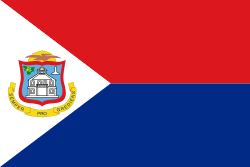 Sint Maarten (No DST)
Sint Maarten (No DST)
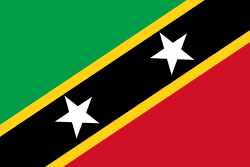 Saint Kitts and Nevis (No DST)
Saint Kitts and Nevis (No DST)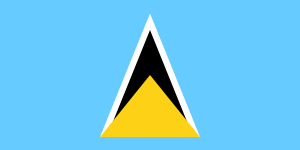 Saint Lucia (No DST)
Saint Lucia (No DST) Saint Vincent and the Grenadines (No DST)
Saint Vincent and the Grenadines (No DST) Trinidad and Tobago (No DST)
Trinidad and Tobago (No DST) The United Kingdom, in the following areas:
The United Kingdom, in the following areas:
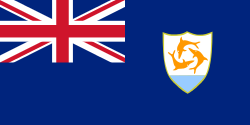 Anguilla (No DST)
Anguilla (No DST) Bermuda
Bermuda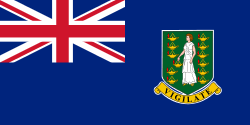 British Virgin Islands (No DST)
British Virgin Islands (No DST) Montserrat (No DST)
Montserrat (No DST)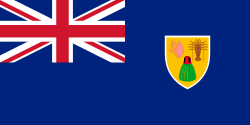 Turks and Caicos Islands (No DST)[4]
Turks and Caicos Islands (No DST)[4]
 The United States, in the following areas:
The United States, in the following areas:
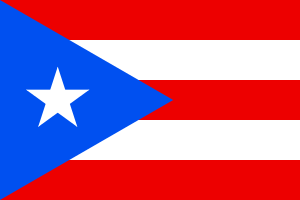 Puerto Rico (No DST)
Puerto Rico (No DST) United States Virgin Islands (No DST)
United States Virgin Islands (No DST)
See also
References
- ↑ "CHAPTER T-6 – Time Definition Act" (PDF). Retrieved 2012-09-11.
- ↑ "Time Definition Act". Archived from the original on 5 June 2008. Retrieved 2008-06-02.
- ↑ "RSNL1990 CHAPTER S-23 – STANDARD TIME ACT". Retrieved 2007-11-16.
- ↑
External links
- World time zone map
- U.S. time zone map
- History of U.S. time zones and UTC conversion
- Canada time zone map
- Time zones for major world cities
- Official times across Canada
- The official U.S. time for the Atlantic Time Zone (no DST)
| Time zones in North America | ||
|---|---|---|
| Time zone | Hours from UTC: Standard time | Hours from UTC: Daylight saving time |
| Hawaii–Aleutian | –10 | –9 (Alaska portion only) |
| Alaska | –9 | –8 |
| Pacific | –8 | –7 |
| Mountain | –7 | –6 |
| Central | –6 | –5 |
| Eastern | –5 | –4 |
| Atlantic | –4 | –3 |
| Newfoundland | –3:30 | –2:30 |
| Saint Pierre and Miquelon and most of Greenland |
–3 | –2 |
| ||||||||||||||||||||||||||||||||